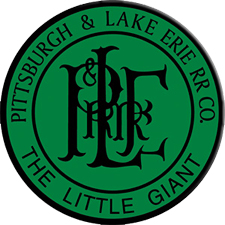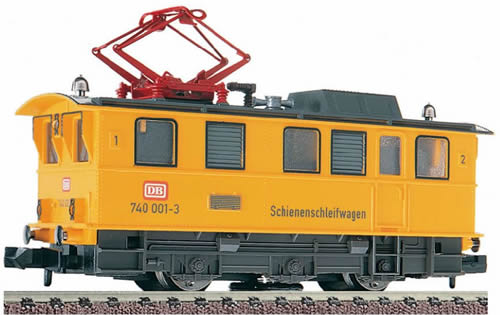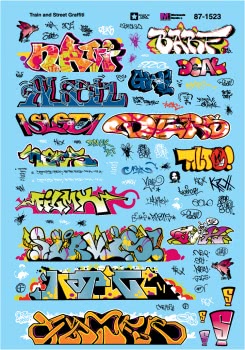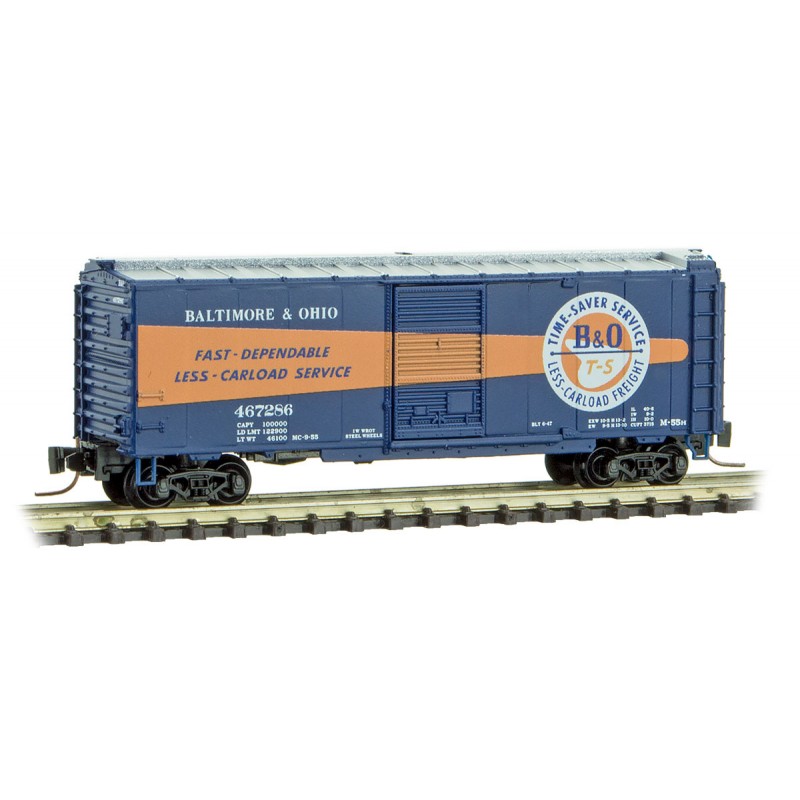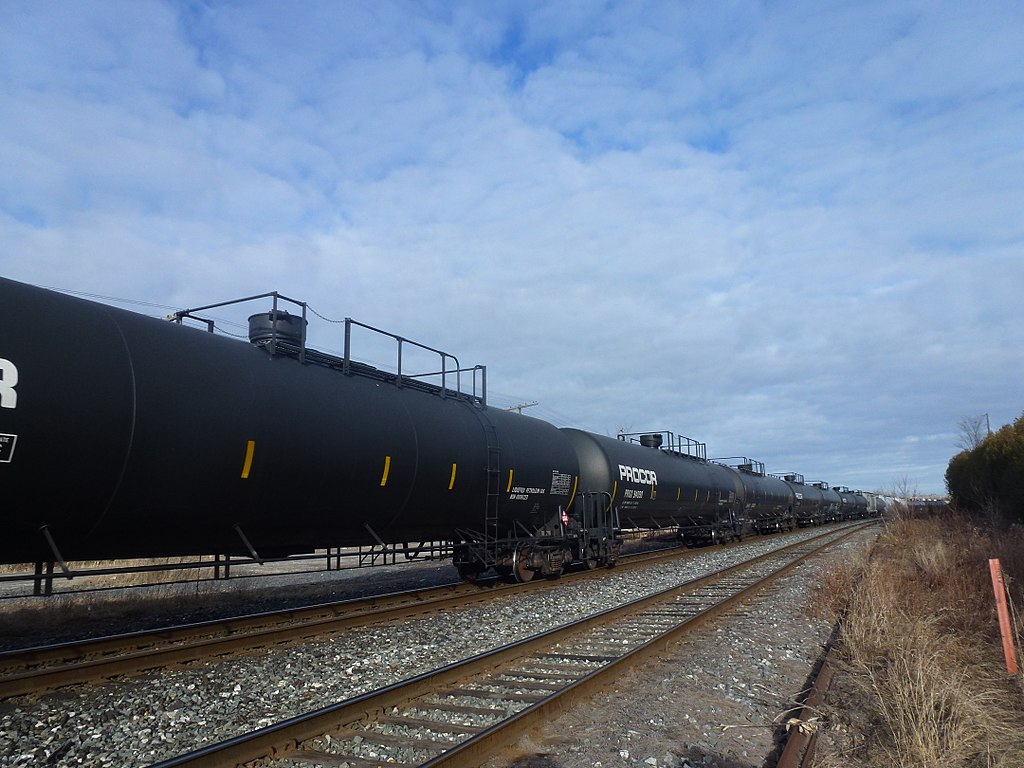AZL - 91334-2 - Tank Car, Single Dome, 33.9K LPG - Pittsburgh & Lake Erie - 100029
| Brand | AZL |
| Stock Number | 91334-2 |
| Original Retail Price | $41.00 |
| Manufacturer | AZL |
| Body Style | AZL Tank Car, 33K, LPG |
| Prototype Vehicle | Tank Car, Single Dome, 33.9K LPG (Details) |
| Road or Company Name | Pittsburgh & Lake Erie (Details) |
| Reporting Marks | P&LE |
| Road or Reporting Number | 100029 |
| Paint Color(s) | Yellow |
| Print Color(s) | Black |
| Coupler Type | AZL AutoLatch |
| Coupler Mount | Truck-Mount |
| Wheel Type | Chemically Blackened Metal |
| Release Date | 2014-10-01 |
| Item Category | Rolling Stock (Freight) |
| Model Type | Tank Car |
| Model Subtype | 33,0000 Gallon |
| Model Variety | Liquid Petroleum Gas (LPG) |
| Region | North America |
| Prototype Era | NA Era V: Modern Diesel (1979 - Present) |
Model Information:
AZL is extremely excited to announce an all new body style in Z scale! This is 33,000 gallon liquid petroleum gas (LPG) tanks cars! These distinctive ‘whale belly’ tank cars have a long history of operations on the rails and are still in service today.
Prototype History:
Liquefied Petroleum Gas (LPG) (also called Autogas) is a liquefied mixture of propane and butane. It is an inevitable by-product of the crude oil refining process and of natural gas processing. In natural gas processing, the natural gas is cleaned off heavy hydrocarbons such as propane and butane before distribution. About 60% of global LP Gas supply comes from natural gas processing. In crude oil refining, LPG is a by-product of the refining process. LPG is gaseous at room temperature and changes to a liquid when compressed at moderate pressure or chilled. The chemical composition of LPG can vary, but is usually made up of butane and propane with a 30-99% propane mix.
The 33,900 gallon tank car is one of the largest standard tank cars used today. While Liquefied Petroleum Gas (LPG) and Anhydrous Ammonia are the two most common commodities, they are also used to transport butadiene, isoprene and gasoline. These cars can be seen regularly in mixed manifest freight trains throughout North America. They travel singly or in large blocks between producers and distributors.
The 33,900 gallon tank car is one of the largest standard tank cars used today. While Liquefied Petroleum Gas (LPG) and Anhydrous Ammonia are the two most common commodities, they are also used to transport butadiene, isoprene and gasoline. These cars can be seen regularly in mixed manifest freight trains throughout North America. They travel singly or in large blocks between producers and distributors.
Road Name History:
The Pittsburgh and Lake Erie Railroad (P&LE) (reporting mark PLE), also known as the "Little Giant", was formed on May 11, 1875. In 1880, William Henry Vanderbilt's Lake Shore and Michigan Southern Railway bought stock to the tune of $200,000 in the P&LE. The P&LE would stay in the Vanderbilt's New York Central system until Conrail. Company headquarters were located in Pittsburgh, Pennsylvania. The line connected Pittsburgh in the east with Youngstown, Ohio at nearby Haselton, Ohio in the west and Connellsville, Pennsylvania to the east. It did not reach Lake Erie (at Ashtabula, Ohio) until the formation of Conrail in 1976.
The P&LE was known as the "Little Giant" since the tonnage that it moved was out of proportion to its route mileage. While it operated around one tenth of one percent of the nation's railroad miles, it hauled around one percent of its tonnage. This was largely because the P&LE served the steel mills of the greater Pittsburgh area, which consumed and shipped vast amounts of material. It was a specialized railroad deriving much of its revenue from coal, coke, iron ore, limestone, and steel. The eventual closure of the steel mills led to the end of the P&LE as an independent line in 1992.
At the end of 1970 P&LE operated 211 miles of road on 784 miles of track, not including PC&Y and Y&S; in 1970 it reported 1419 million ton-miles of revenue freight, down from 2437 million in 1944.
The P&LE was known as the "Little Giant" since the tonnage that it moved was out of proportion to its route mileage. While it operated around one tenth of one percent of the nation's railroad miles, it hauled around one percent of its tonnage. This was largely because the P&LE served the steel mills of the greater Pittsburgh area, which consumed and shipped vast amounts of material. It was a specialized railroad deriving much of its revenue from coal, coke, iron ore, limestone, and steel. The eventual closure of the steel mills led to the end of the P&LE as an independent line in 1992.
At the end of 1970 P&LE operated 211 miles of road on 784 miles of track, not including PC&Y and Y&S; in 1970 it reported 1419 million ton-miles of revenue freight, down from 2437 million in 1944.
Brand/Importer Information:
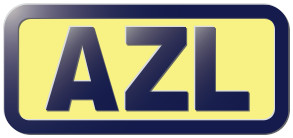 AZL is the leader in North American Z scale locomotives and rolling stock. Since 2000, AZL has released a vast variety of freight, passenger and locomotives. AZL continues to push the boundaries of Z scale with amazing details and incredible performance. No matter if you are looking to run steam, or the most modern diesels, AZL has something for you.
AZL is the leader in North American Z scale locomotives and rolling stock. Since 2000, AZL has released a vast variety of freight, passenger and locomotives. AZL continues to push the boundaries of Z scale with amazing details and incredible performance. No matter if you are looking to run steam, or the most modern diesels, AZL has something for you.

Item created by: CNW400
on 2021-06-23 14:43:29
If you see errors or missing data in this entry, please feel free to log in and edit it. Anyone with a Gmail account can log in instantly.
If you see errors or missing data in this entry, please feel free to log in and edit it. Anyone with a Gmail account can log in instantly.



